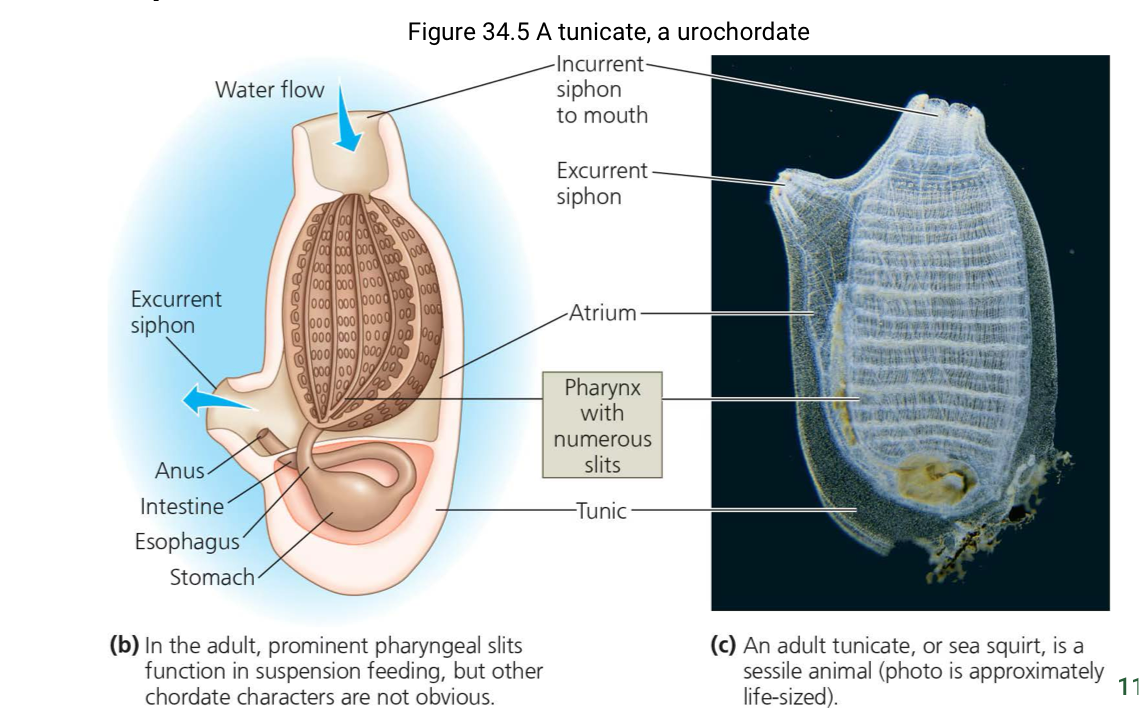Topic 26: Introduction to chordates
1/18
Earn XP
Description and Tags
At the end of Topic 26, students should be able to: Explain the shared derived traits of chordates. Describe the body plan and morphological features of lancelets and tunicates.
Name | Mastery | Learn | Test | Matching | Spaced |
|---|
No study sessions yet.
19 Terms
Which clade do chordates belong to and what are common characteristics?
chordates: bilaterian animals that belong to clade deuterostomia
bilaterally symmetrical coelomates with segmented bodies and deuterostome development
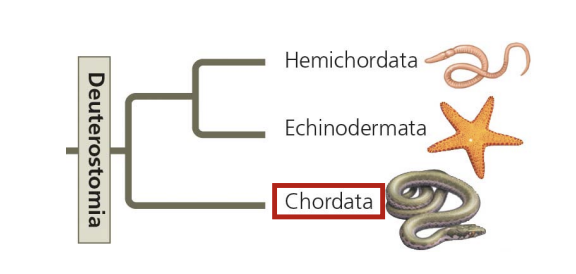
What do majority of chordate species have? What vertebrate and invertebrate groups do chordates have?
most chordates have vertebral columns (aka. verebrates)
so chordata include all vertebrates and 2 groups of invertebrates: urochordates and cephalochordates.
What shared derived characteristics do chordates share?
they share these 4 characteristics at some point during their life cycle:
Notochord
Dorsal, hollow nerve cord
Pharyngeal slits or clefts
Muscular, post-anal tail

What’s a notochord? Where is it located? What function does it give? When does it develop? Who has it (all vs some)?
longitudinal, flexible rod
located dorsally between the digestive tract and nerve cord
provides flexible skeletal support (esp. invertebrates)
The notochord develops from the dorsal mesoderm (muscle!!)
is present in all chordate embryos and some adults.
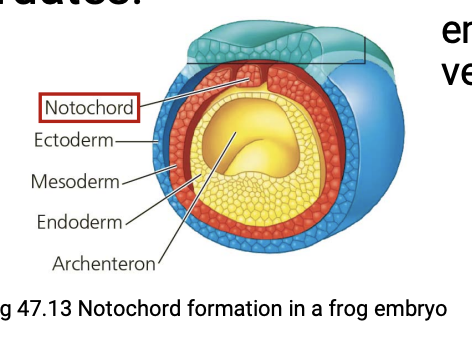
What are 2 groups of inverebrates part of chordates?
urochordates and cephalochordates
What’s the dorsal, hollow nerve chord? When does it develop? Who is this unique to- what do other organisms have instead?
Dorsla, hollow, Nerve cord that develops from a plate of ectoderm during embryonic development (ectoderm rolls inward that’s more dorsal to the notochord)
this dorsal, hollow nerve cord is unique to chordates
other animal phlya have ventrally (underside) located solid nerve chords
What does the nerve plate vs nerve tube form?
nerve plate curves inward- forms the neural tube
then the neural tube devleops the central nervous system (brain and spinal chord)

What/ where are pharyngeal slits or clefts? How does it develop?
embryonic arches develop in the pharynx (region posterior [more backside] to the mouth)
embryonic pharyngeal clefts develop into slits that open to the outside of the body. —> allow water to enter and exit through the slits, preventing to pass into the digestive tract
What are 3 functions of the pharyneal slits? Who is it specific to? Who does it include vs exclude?
filter-feeding structures —> in invertebrate chordates
gas exchange —> in aquatic vertebrates, excluding tetrapods
gills develop along the pharyneal arches, and water forced up the gill slits
skeletal and muscle elements of the head and neck in tetrapods.
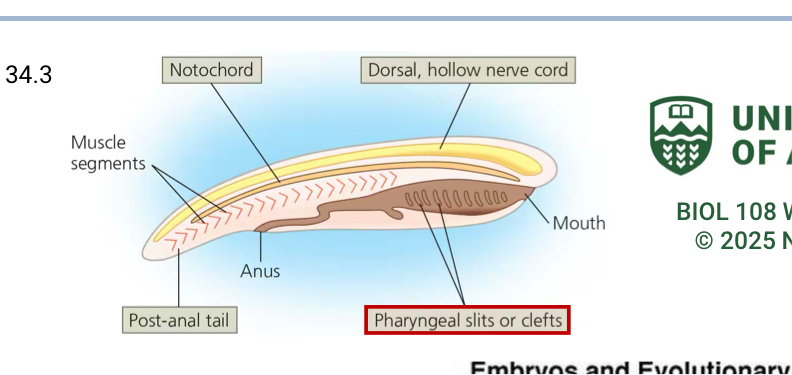
When is pharngeal slits only present in tetrapods? Why?
only present during embryonic development
they’re precursors to many skeletal and muscle elements of head and neck in tetrapods
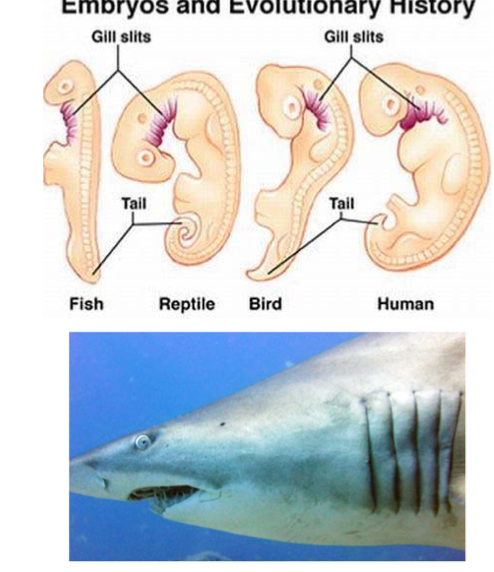
Who has the muscular post anal tail? What does it contain? What’s its 2 functions in who? When is it greatly reduced for some?
most adults have this posterior to the anus
contains skeletal elements and muscles
provides propulsive force in most aquatic chordates (swimming tail) and can be a grip/balance
tail is greatly reduced during embryonic development in some chordates.
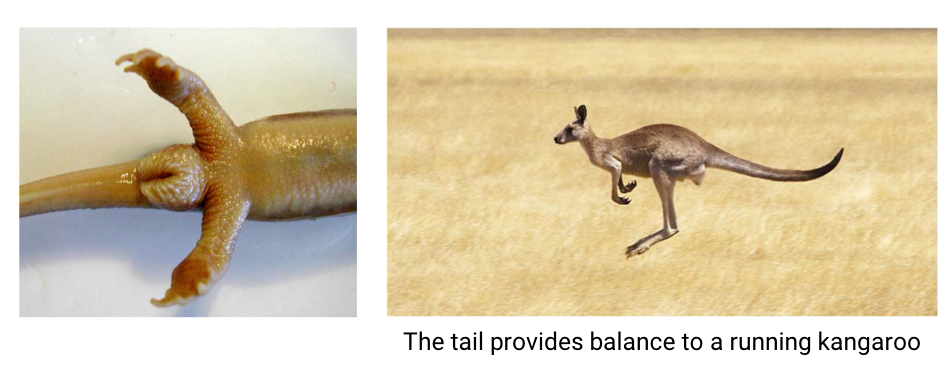
What’s segmentation? What are examples? And when does this usually happen in chordates?
segments: highly specialized body regions
eg. veretebral column, muscle blocks
most chordates have it, at least during their embryonic development
How did the segmentation of chordates evolve? it’s a primitve character of which clade?
segmentation of chordates evolved independently from other phyla
primitve character of clade Deuterostomia (character that’s preserved but not common to all)

Who is segmentally arranged muscle blocks present in? Who is the exception? Where does it develop? What pattenerns are the muscles arranged in? What does the alternating contractions of muscle allow in aquatic chordates?
present in ALL adult chordates except Urochordata
develops from the mesoderm (somites)
muscle blocks are in chevron patters (»»)
alternating contraction allows to flex side-to-side (so help swimming in marine chordates!)
What do all common chordates share (1 trait) vs some chordates share (2 traits)?
all share notochord
vertebrae and jaws with mineralized skeleton is when only some share
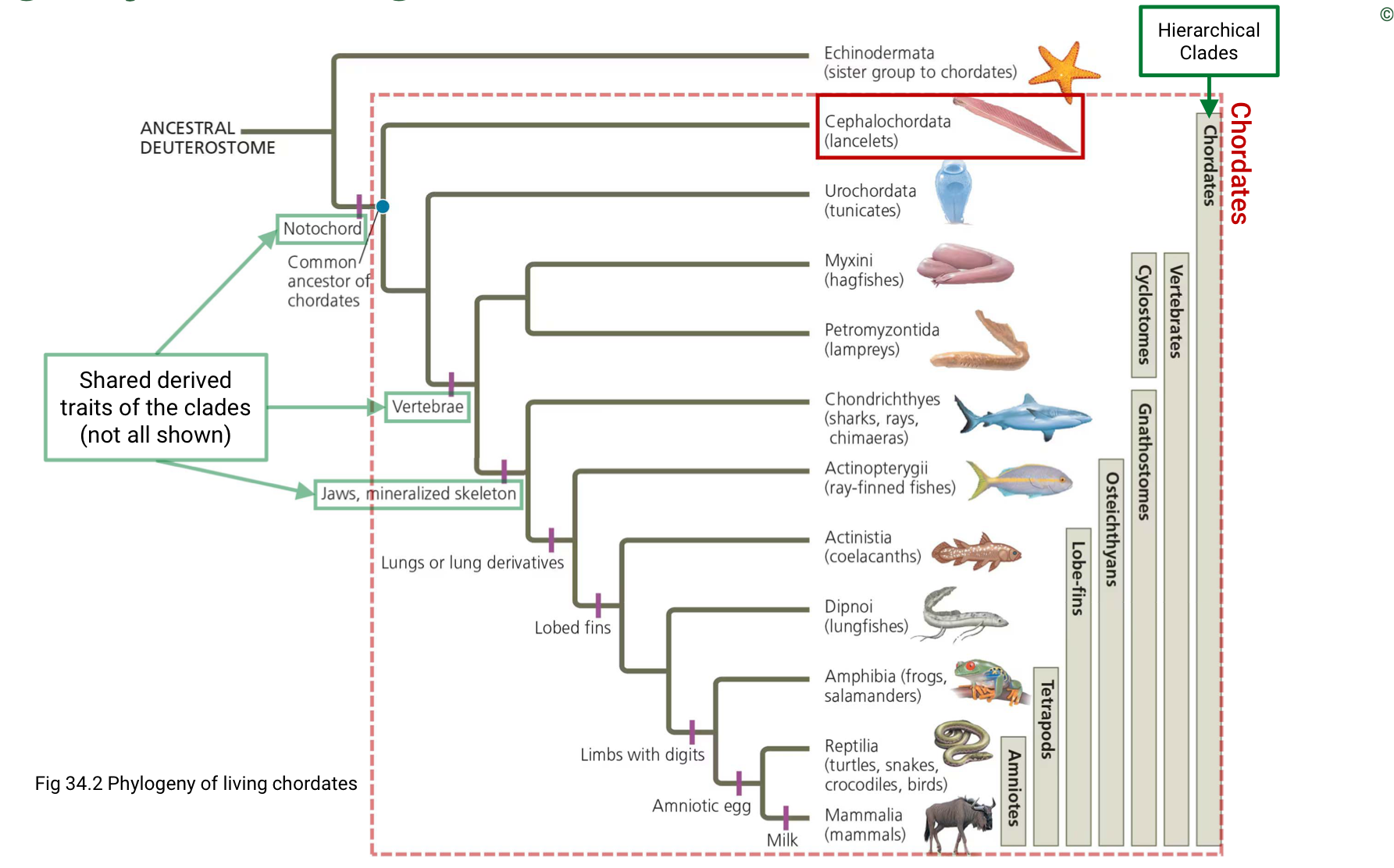
What are 2 examples of invertebrate chordates?
Lanceletes (Cephalochordata)
Tunicates (Urochordata)
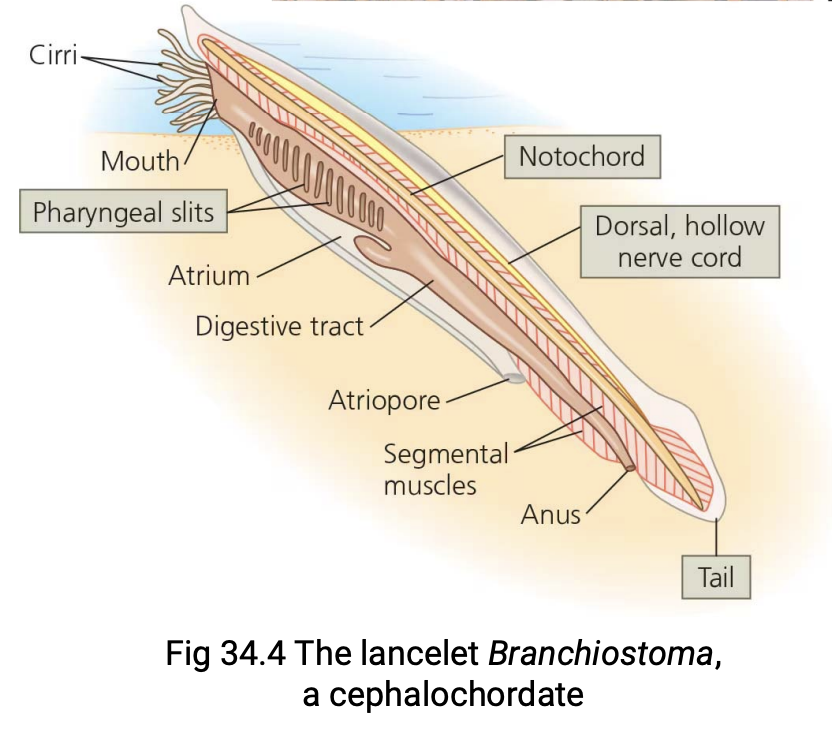
Which phylum is Lancelets part of? Who do they resemble? Do they retain chordate chracteristics? How do they feed (the steps)?
Cephalochordata
superficially resemble fish,
yes; retain chordate characteristics as adults.
Sedentary suspension feeders; Feed by:
wriggle into the sand backwards (anterior inside)
drawing water into the mouth and filtering food particles with mucus-covered pharyngeal slits
mucous net (with food) digested
water passes out via atriopore.
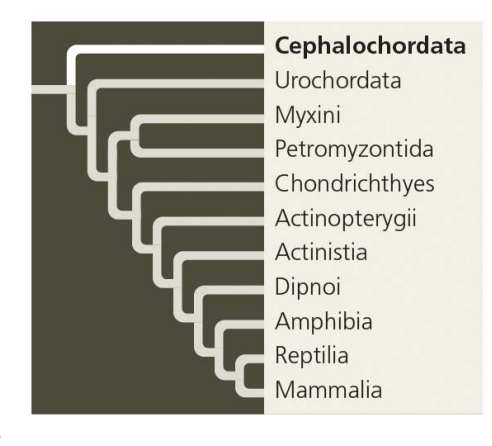
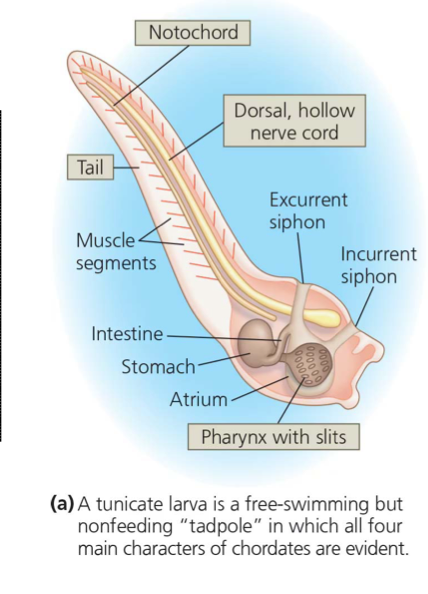
What phylum is Tunicates part of? Who are they a sister taxa to? So who are they more related to compared to Lancelets? What is their lifestyle like? At what stages do Tunicates resemble and not resmble chordates?
Urochordata
are the living sister taxa of vertebrates; so more closely related to verebrates than lancelets
adult tunicates are sessile or pelagic (living at the open sea).
Larval tunicates show chordate the 4 shared derived traits (the taddpole looking, non-sessile phase) but most are lost in adult tunicates
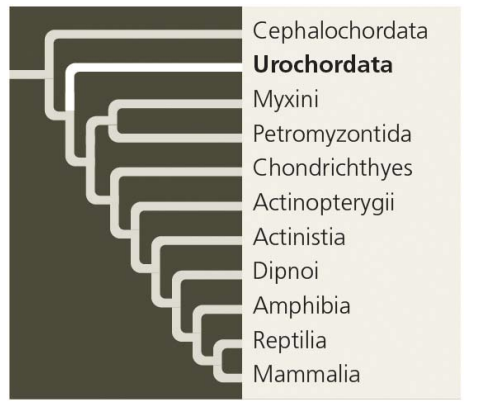
What kind of feeders are they? How do they feed? What are covered by?
marine filter feeders
adults filter-feed using a mucus-covered pharyngeal basket.
water enters the siphon, filters by pharngeal basket, collect the food and exit out the siphon
They’re covered by a tough polysacchardie called tunic
